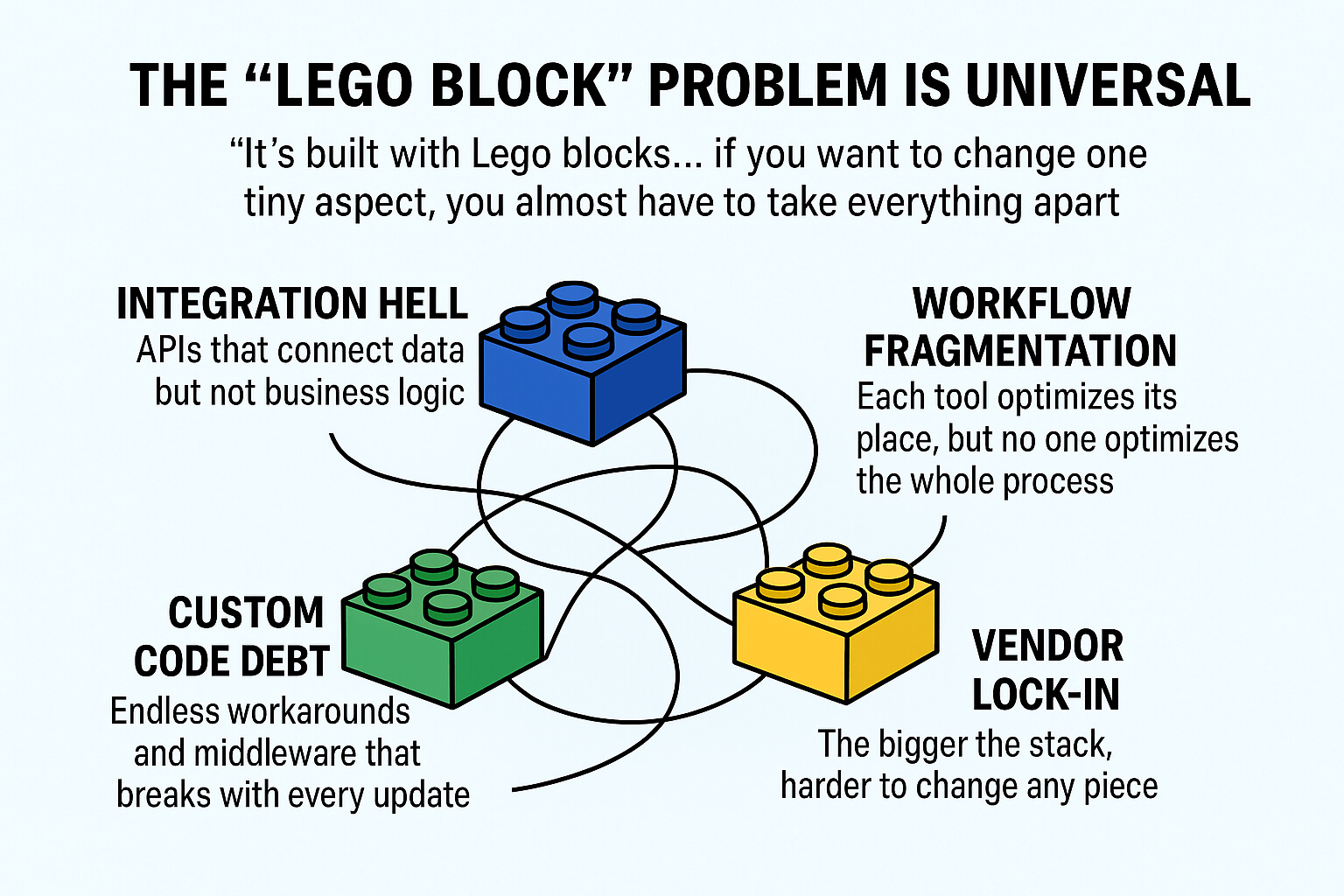The〝Lego Block〞Problem Is Universal — And It’s Breaking Enterprise Agility
By SWIFT AI Team
Aug 18, 2025
If you’ve ever tried to change one tiny thing in a complex system — whether it’s a child’s Lego masterpiece or a multinational’s software stack— you’ve probably felt the same frustration:
“It’s built with Lego blocks… and if you want to change one tiny aspect, you almost have to take everything apart.”
This isn’t just a metaphor. It’s the hidden enemy of agility in modern enterprises.

The Anatomy of the Lego Block Problem
Most organizations start with the best intentions: select best-of-breed tools, integrate them, and build a system that “just works.” Over time, though, these carefully chosen components harden into a rigid, brittle structure.
Here’s how it Happens in the Enterprise
- Integration Hell. Your APIs connect the data, but not the business logic. Sure, Tool A can talk to Tool B — but only enough to push and pull information. The real process knowledge? That’s trapped inside each tool. So, the moment you need to change a workflow, you’re juggling API calls, custom scripts, and brittle point-to-point connections.
- Workflow Fragmentation. Each tool optimizes its piece beautifully — but no one’s optimizing the whole process. That marketing automation platform? Amazing at campaigns. Your CRM? A customer-data goldmine. But try mapping a lead’s journey across five different tools, and you’re suddenly building a manual data pipeline in Excel just to get visibility.
- Custom Code Debt. At first, the quick fixes are harmless — just a few scripts here, a bit of middleware there. But over time, you’re building a Jenga tower of fragile workarounds. Every platform update becomes a “breaking change,” sending developers into triage mode instead of working on innovation.
- Vendor Lock-In. The bigger the stack, the harder it is to change any piece without collapsing the rest. That all-in-one ERP or monolithic CRM suite may have been a blessing in year one — but five years in, swapping out a single component feels like open-heart surgery.
Why This Problem Is Everywhere
The Lego Block problem isn’t unique to tech — it’s in manufacturing supply chains, healthcare records systems, even retail merchandising processes. Anywhere you stack modular components without a holistic integration strategy, you end up with a system that looks flexible but behaves like poured concrete.
Escaping the Lego Trap
The antidote isn’t to throw away modularity — it’s to treat the connections as seriously as the components. That means:
- Design for change from day one: Assume every major component will be replaced eventually.
- Integrate business logic, not just data: Let processes flow end-to-end, not tool-by-tool.
- Continuously refactor custom code: Treat integrations as living systems, not “set and forget” jobs.
- Minimize dependencies: Fewer hard connections means more room to maneuver.
Bottom line
Modularity only works if it’s paired with flexibility. Otherwise, your enterprise stack will age into a brittle, expensive-to-maintain Lego sculpture — beautiful to look at, but a nightmare to rebuild.
 Cart is empty
Cart is empty